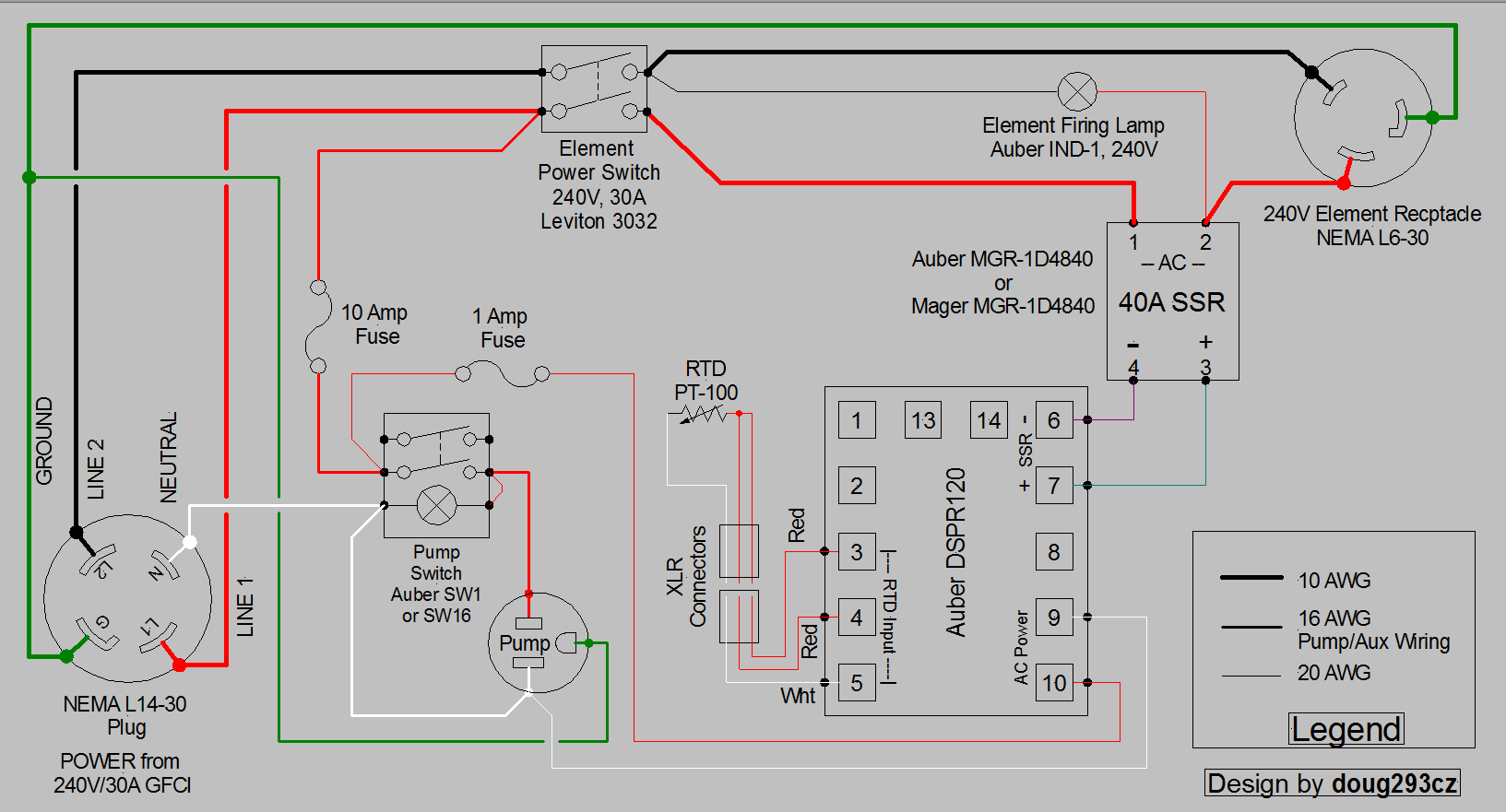kokonutz
Well-Known Member
Attached is my first go at a wiring scheme for a control panel, but I have some questions. Of course, waiving any liability to any participants, can I get some feedback regarding the attached?
I'm looking to do a 15-20 gallon 2 vessel, one pump system. I would also like to have the pump power run through my CP. My element will very likely be 4500 watts...it's the only all stainless I could find (open to other suggestions there....); this puts the unit into the 30amp arena which is fine, but seems to enter a new layer of concerns regarding both safety and protection of the equipment.
Contactor - Packard 230b
Pump switch
Main Switch - 4 pin rocker
Thanks all
I'm looking to do a 15-20 gallon 2 vessel, one pump system. I would also like to have the pump power run through my CP. My element will very likely be 4500 watts...it's the only all stainless I could find (open to other suggestions there....); this puts the unit into the 30amp arena which is fine, but seems to enter a new layer of concerns regarding both safety and protection of the equipment.
- Do I need an in unit circuit breaker as well as the one from our house main?
- Do I need fuses around the switches?
- Given the element alone could draw close to 20 amps , does the main power switch need to be rated above that? I only choose this switch because it rated up to 30 amps
Contactor - Packard 230b
Pump switch
Main Switch - 4 pin rocker
Thanks all































![Craft A Brew - Safale BE-256 Yeast - Fermentis - Belgian Ale Dry Yeast - For Belgian & Strong Ales - Ingredients for Home Brewing - Beer Making Supplies - [3 Pack]](https://m.media-amazon.com/images/I/51bcKEwQmWL._SL500_.jpg)





























